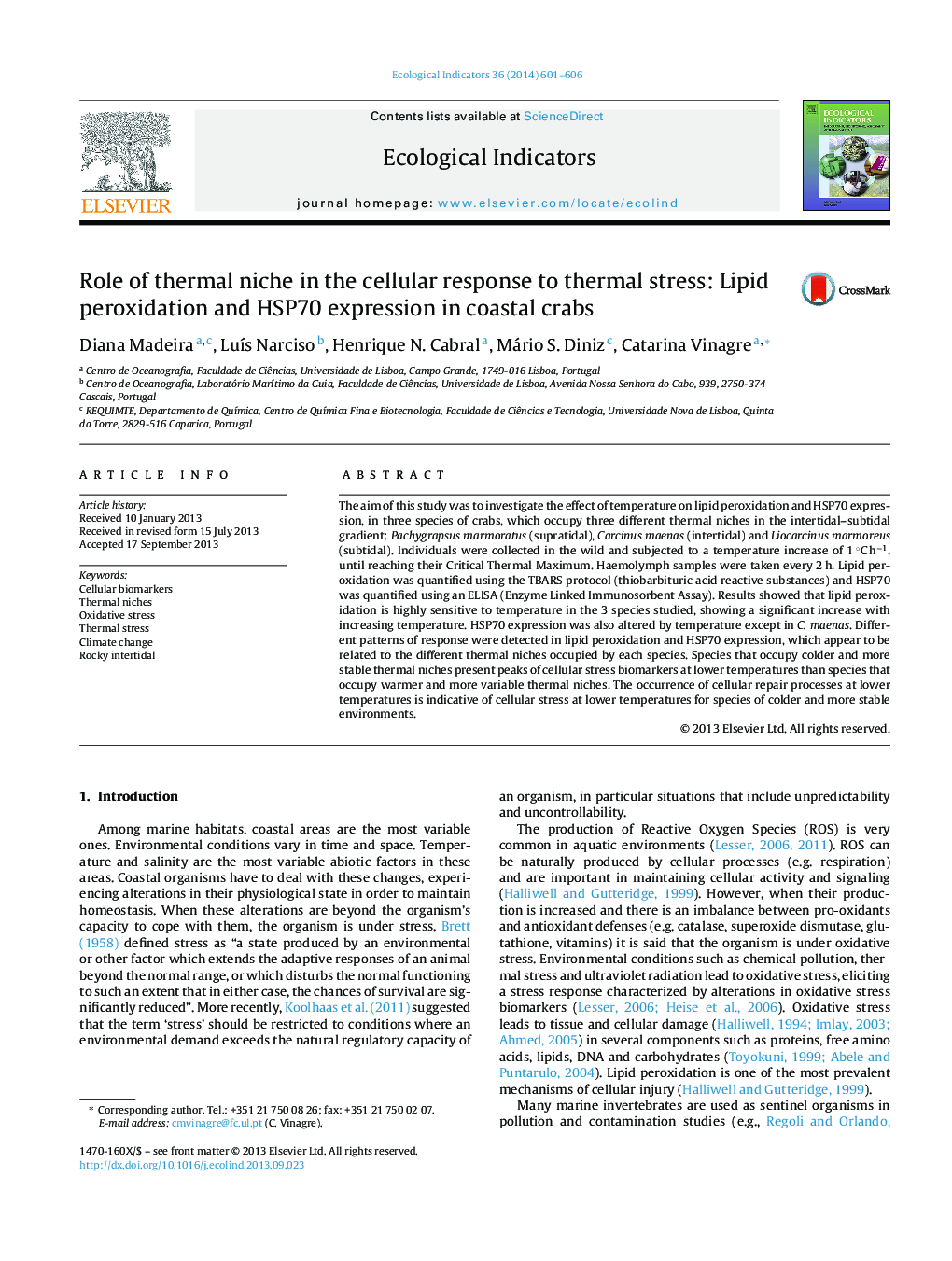| Article ID | Journal | Published Year | Pages | File Type |
|---|---|---|---|---|
| 4373355 | Ecological Indicators | 2014 | 6 Pages |
•Temperature affected LPO in coastal crabs.•Temperature affected HSP70 in all species, with the exception of C. maenas.•A correlation between LPO and HSP70 was only found for L. marmoreus.•LPO should be used with caution in bio-monitoring.
The aim of this study was to investigate the effect of temperature on lipid peroxidation and HSP70 expression, in three species of crabs, which occupy three different thermal niches in the intertidal–subtidal gradient: Pachygrapsus marmoratus (supratidal), Carcinus maenas (intertidal) and Liocarcinus marmoreus (subtidal). Individuals were collected in the wild and subjected to a temperature increase of 1 °C h−1, until reaching their Critical Thermal Maximum. Haemolymph samples were taken every 2 h. Lipid peroxidation was quantified using the TBARS protocol (thiobarbituric acid reactive substances) and HSP70 was quantified using an ELISA (Enzyme Linked Immunosorbent Assay). Results showed that lipid peroxidation is highly sensitive to temperature in the 3 species studied, showing a significant increase with increasing temperature. HSP70 expression was also altered by temperature except in C. maenas. Different patterns of response were detected in lipid peroxidation and HSP70 expression, which appear to be related to the different thermal niches occupied by each species. Species that occupy colder and more stable thermal niches present peaks of cellular stress biomarkers at lower temperatures than species that occupy warmer and more variable thermal niches. The occurrence of cellular repair processes at lower temperatures is indicative of cellular stress at lower temperatures for species of colder and more stable environments.
